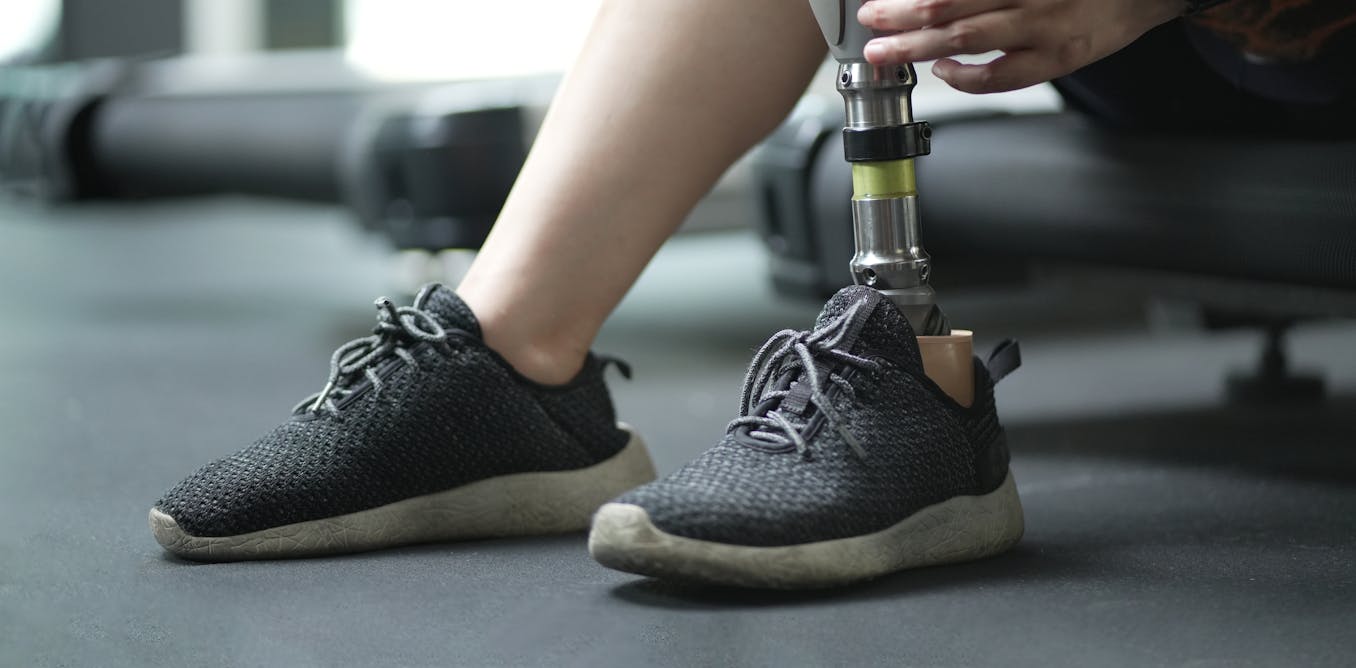The Peripheral Artery Disease


Reducing Amputations: The Focus on Speed in Vascular Surgery
Imagine putting your socks on one morning and noticing your big toe, which has been painful for a few weeks, has started turning black. A trip to your doctor ends in being referred urgently to a specialist. They tell you a bypass operation of a blocked artery in your thigh is needed to save your foot. This is the reality for far too many people. In the UK, vascular surgeons performed more than 3,500 amputations in 2023.
Efforts to Reduce Amputations
Efforts are being made throughout the NHS to reduce the number of amputations performed due to peripheral artery disease. The vascular surgery unit in Glenfield Hospital, Leicester, aimed to streamline the process from referral to treatment for people at risk of amputation. With colleagues, I co-authored a new study that shows this focus on speed may have reduced the risk of amputation by half.
What is Peripheral Artery Disease?
Peripheral artery disease is the narrowing and blocking of the arteries in the legs. This process of furring up of the blood vessels is the same that causes cardiovascular disease. But while the signs and symptoms of a heart attack or stroke are well known, few have heard of their equivalent in the legs.
Prevalence and Symptoms
More than one in ten people aged over 65 in the UK have peripheral artery disease. With the rise in prevalence of diabetes and a steadily ageing population, it is also becoming even more common. Most people have no symptoms but still have a higher risk of heart attacks, strokes or death. The first symptoms are pain in the calf when walking, termed intermittent claudication – window-shopping legs as the Dutch call it.
Treatment Options
Blood thinners and cholesterol-lowering drugs are prescribed for the early stage of the disease. Lifestyle changes such as stopping smoking, exercising and managing diabetes or high blood pressure are also important parts of treatment. For many people, this is all the treatment for peripheral artery disease they will need.
Complications and End-Stage Disease
As the disease progresses it can cause pain at rest, foot ulcers and even gangrene, necessitating leg-saving surgery or major amputation. This end-stage of the disease is called chronic limb-threatening ischaemia. The survival of people with this stage of the disease is worse than many cancers – less than 50% will be alive five years from diagnosis.
Speed is Crucial
Our research compared a historical group of patients (from 2013-15) to a contemporary group (2019-22) before and after changes to treatment pathways. These changes included opening a state-of-the-art hybrid theatre (with integrated X-ray imaging) and opening a specialist, rapid-access clinic. The focus was to reduce the time from referral to surgery using the most modern surgical techniques.
Conclusion
There are some caveats to the results given differences between how the two groups were recruited to the study. Still, the study provides validation that the focus on seeing and treating people suspected of chronic limb-threatening ischaemia quickly does prevent significant numbers of amputations.
FAQs
Q: What is peripheral artery disease?
A: Peripheral artery disease is the narrowing and blocking of the arteries in the legs.
Q: How common is peripheral artery disease?
A: More than one in ten people aged over 65 in the UK have peripheral artery disease.
Q: What are the symptoms of peripheral artery disease?
A: The first symptoms are pain in the calf when walking, termed intermittent claudication – window-shopping legs as the Dutch call it.
Q: Can peripheral artery disease be treated?
A: Blood thinners and cholesterol-lowering drugs are prescribed for the early stage of the disease. Lifestyle changes such as stopping smoking, exercising and managing diabetes or high blood pressure are also important parts of treatment.
Q: What is the prognosis for people with chronic limb-threatening ischaemia?
A: The survival of people with this stage of the disease is worse than many cancers – less than 50% will be alive five years from diagnosis.
Recent Posts
Gallstones May Be the First Sign of Fatty Liver Disease
How Are Gallstones Connected to MASLD and MASH? Gallstones are hard "pebbles" made of cholesterol…
Oh-So-Comfy Slip-On Sneakers That Podiatrists Love
Most Breathable: Allbirds Tree Dasher Relay The Allbirds Tree Dasher Relay is one of the…
Here is the rephrased title: “60-Day Scripts: A Step Backwards in Reducing Medication Costs?”
A Hard-Won Policy, Slow Uptake Labor has committed A$690 million over four years to cut…
How Scratching Monkeys Can Help Us Understand Emotions and Consciousness
Article Scientists Study Monkeys' Self-Scratching Behavior to Understand Link between Anxiety and Pessimism Scientists Sakumi…
Sunny Hostin Reveals Surprising Experience After Stopping Weight-Loss Drug Mounjaro
The View Co-Host Sunny Hostin Opens Up About Her Experience with Weight-Loss Drug Mounjaro Sunny…
14 Changes to Make in Your Home for Allergic Asthma
1. Get Into a Cleaning Routine Some of the most common allergens that trigger asthma…




